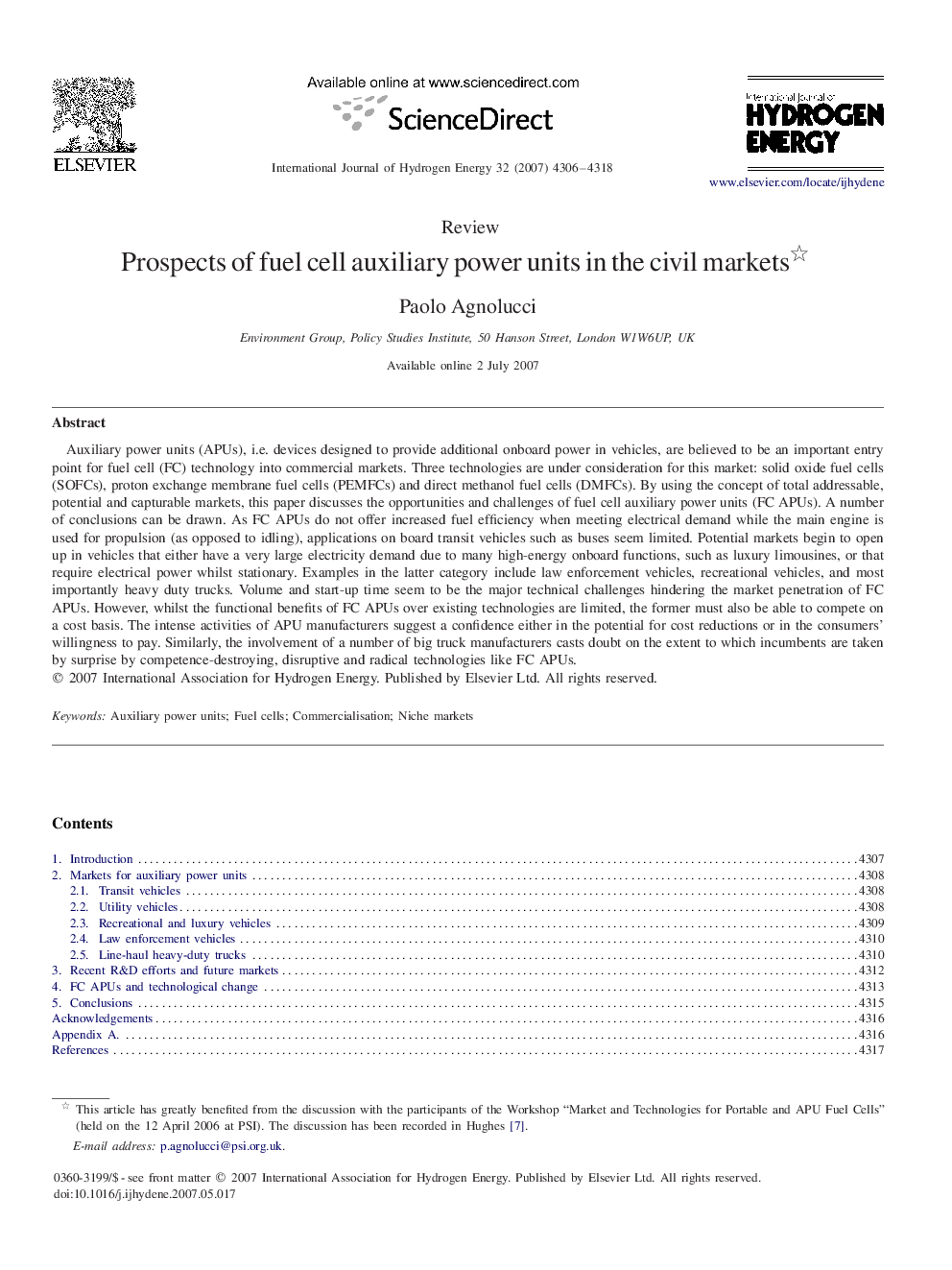| Article ID | Journal | Published Year | Pages | File Type |
|---|---|---|---|---|
| 1281811 | International Journal of Hydrogen Energy | 2007 | 13 Pages |
Auxiliary power units (APUs), i.e. devices designed to provide additional onboard power in vehicles, are believed to be an important entry point for fuel cell (FC) technology into commercial markets. Three technologies are under consideration for this market: solid oxide fuel cells (SOFCs), proton exchange membrane fuel cells (PEMFCs) and direct methanol fuel cells (DMFCs). By using the concept of total addressable, potential and capturable markets, this paper discusses the opportunities and challenges of fuel cell auxiliary power units (FC APUs). A number of conclusions can be drawn. As FC APUs do not offer increased fuel efficiency when meeting electrical demand while the main engine is used for propulsion (as opposed to idling), applications on board transit vehicles such as buses seem limited. Potential markets begin to open up in vehicles that either have a very large electricity demand due to many high-energy onboard functions, such as luxury limousines, or that require electrical power whilst stationary. Examples in the latter category include law enforcement vehicles, recreational vehicles, and most importantly heavy duty trucks. Volume and start-up time seem to be the major technical challenges hindering the market penetration of FC APUs. However, whilst the functional benefits of FC APUs over existing technologies are limited, the former must also be able to compete on a cost basis. The intense activities of APU manufacturers suggest a confidence either in the potential for cost reductions or in the consumers’ willingness to pay. Similarly, the involvement of a number of big truck manufacturers casts doubt on the extent to which incumbents are taken by surprise by competence-destroying, disruptive and radical technologies like FC APUs.
